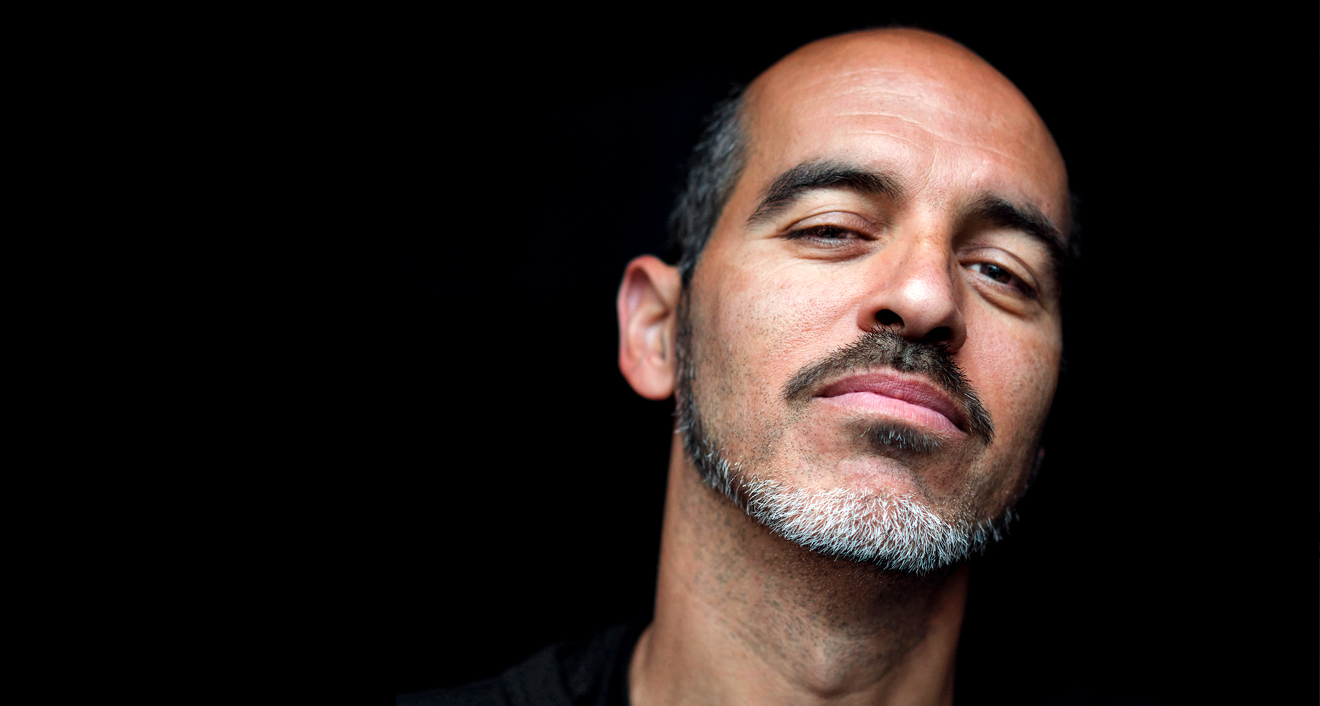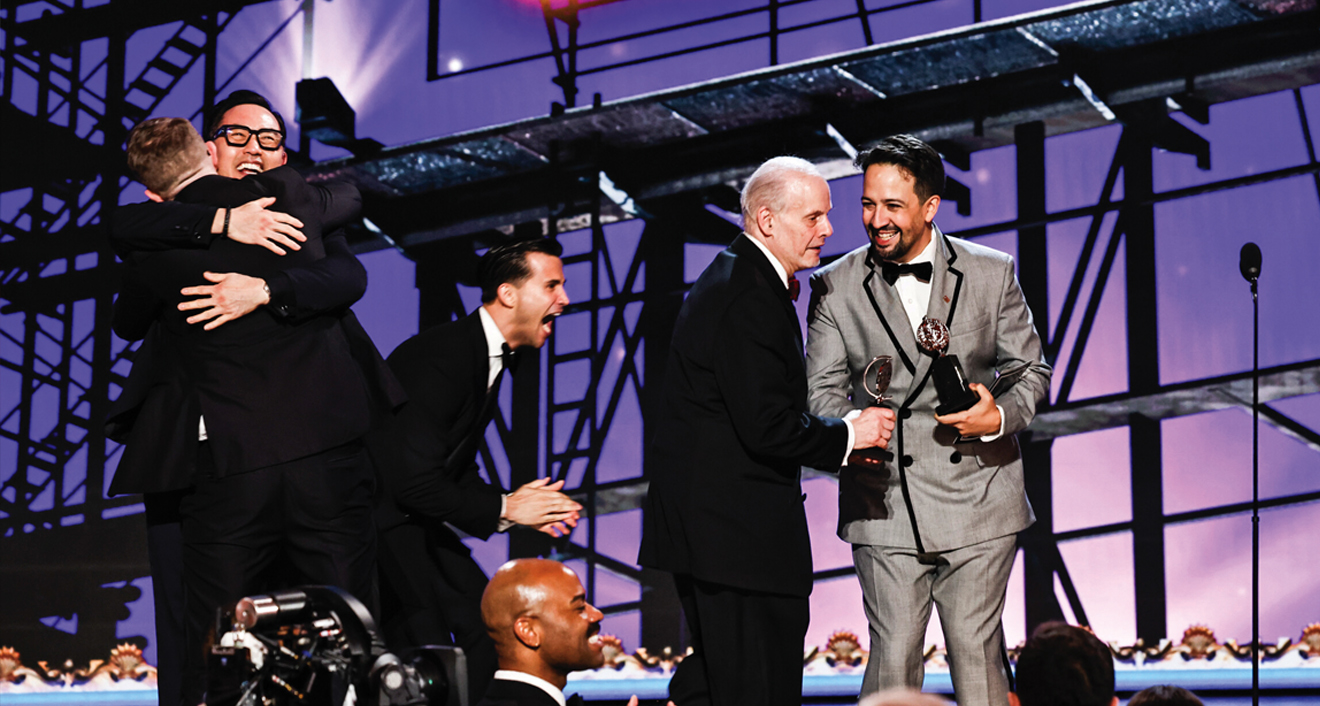
Holding Court

For decades, Robert García ’88—aka Bobbito, Kool Bob Love, Bobby Nice, et cetera—has been posted up at an intersection of New York City subcultures. In the 1990s, he parlayed an entry-level job at the seminal hip-hop label Def Jam Recordings into co-hosting The Stretch Armstrong and Bobbito Show, providing some of the earliest radio exposure to then-unsigned, unknown artists like Jay-Z and Notorious BIG who eventually sold some 300 million albums combined. His essay, “Confessions of a Sneaker Addict,” is effectively the first piece of journalism documenting the now-$10 billion business of sneaker collecting, and his 2003 book Where’d You Get Those? New York City's Sneaker Culture: 1960–1987 became a sneakerhead’s bible.
But before everything else, García was a kid sinking jumpers on a playground, immersed in the hyper-creative style of basketball emerging from the city’s parks. “I embrace playing basketball the same way as I did in 1980 when I was 14,” says García, now 59. “There is absolutely no difference. You’re outside, you’re meeting people, you’re testing your mind and your body and your soul. Those are really great contexts for quality of life, straight up.”
Now, in Bobbito’s Book of B-Ball Bong Bong! A Memoir of Sports, Style, and Soul (Akashic Books), García offers a slang-heavy, discursive chronicle of how his childhood pastime became a passport across cultural borders. García’s narrative travels from the parks where he grew up on the Upper West Side to the courts in his ancestral home of Puerto Rico where he played professionally, the sneaker-centric chats with NBA stars on his ESPN show to the classic voiceover he provided for EA Sports’s NBA Street Vol. 2 video game, the seven Air Force 1 models he designed for Nike to the youth clinics he’s led on six continents. Ultimately, his love letter to playground basketball doubles as a people’s history of an under-considered subculture, examining its influence on fashion, music, media, and commerce from a player’s point of view. Here, García reflects on why playground basketball sunk its hooks, the Wesleyan professors who inspired his approach to documenting subcultures, and the move he pulled off on the Harlem blacktop 30-something years ago that feels like it happened yesterday.

Robert García ’88: The winter of 1980–81, basketball became so important to me. I went the next 10 years without a girlfriend because I didn’t want a commitment to being anything else but the best ballplayer I could be. I’m pop culture-challenged: there are so many blockbuster movies I didn’t see. Family Ties or Cheers—I didn’t watch any of that stuff. I was playing ball.
This simple sport that doesn’t require much equipment has a special way of bringing people together. It’s been this outlet to express myself in a positive way for decades now, in a way that I couldn’t do in organized sports.
I used to play ball with a professor of Russian history, alongside a former heroin addict, you know? That’s the beauty . . . if I went to the New York Athletic Club, I’d have to be a Wall Street banker to afford to play there. But if I go to Riverside Park at 70th Street and the West Side Highway, anybody can just pull up. It’s free.
There was this folklore in New York that was so enchanting, and this history that was untold, that I was just fascinated by. . . . What I learned from my professors, Rob Rosenthal and [Hubert] O’Gorman, as a sociology major, is not to look at social phenomena as cause and effect. There are multiple variables involved in every relationship, not just, “This person did this, and then that happened.” [In the 1980s and ’90s] there were multiple phenomena that were happening at the same time—hip-hop, sneaker culture, playground basketball—and they were all interconnected. I experienced them, and now I’m documenting them.
I was part of the generation that started looking at basketball in a different way—how can we dribble differently; how can we pass differently? Everybody knows Bob Cousy and “Pistol” Pete [Maravich], Nate “Tiny” Archibald and Julius Erving—they’re amazing. But there were all these local cats doing incredible moves under the radar. I tried to open the curtain to all those “influencers”—[to] use the current term—from the ’60s, ’70s, ’80s, and ’90s who not only inspired me, but inspired how people play in the NBA, which then inspires how people play across the world. There are all these ripple effects of what happens on the asphalt that we [don’t] see for decades.
Basketball is the culture that informs hip-hop. Any iconic hip-hop shoe—from the Chuck Taylor to the Pro Ked 69ers to the Nike Air Force 1s to the shell toes by Adidas—they were all basketball performance sneakers that were made cool by ball players. That trickled down to hip-hop heads.
I don’t know if I would have got into Def Jam if I hadn’t played ball, because my contacts and connects are all from the asphalt.
Anybody can be a Knicks fan; being a skilled ball player takes time and effort and practice. Hip-hop was like that as well. You had to be an active participant, go to the showcases, to the ciphers, to the clubs late at night that nobody knew about to really experience the culture in a way that wasn’t being presented on Yo! MTV Raps.
I wasn’t no NBA prospect, I wasn’t no Division I prospect, no high school phenom. I was just a dude that had certain skills that were attractive. I was a crowd pleaser, but that helped catapult people’s fondness for what I represented because it came from such a sincere place.
I’m not saying I’m the sole person to ever do this move, but I had never seen anybody else do it when I [first] did it. It’s dribbling at full speed forward, throwing the ball between my legs as if I was passing it, and then turning my hips to catch the ball behind my butt with my hand while simultaneously looking at my teammate behind me, then turning my body back forward so the defender thinks I’m passing the ball to the person five to 10 feet behind me, but in the end, I’m still going forward. And that move has worked every single time.
I’ll never forget that feeling of working on that move for months before revealing it, in Harlem of all places. If you aspire to sing, Harlem is like Carnegie Hall: To be able to do a tricky basketball move, pull it off in Harlem, and the crowd is like Oh!, then you know you did something right. I could have done that move in the suburbs, and it wouldn’t have meant as much.
I can be in Senegal or Japan, and I know I’m not in New York anymore, but I’m on a court, I’m teaching kids how to play, and I can sense the love. . . . Any country I’ve been to, I’ll walk into the park, I know who the old dudes are who don’t listen to hip-hop, the younger kids who do listen to hip-hop, the dude who has five kids and just got off work and wants to get some recreation, the kid [who’s really good] and wants to come to New York at some point. You sense it from the way people dress, the way people move. It’s unspoken.
I don’t live in the five boroughs anymore. I’m unschooling my son with my co-parent, I’m a caregiver to my co-parent who’s unfortunately immunocompromised and disabled, so I haven’t played against anybody in five years.
I just did a promo shoot at the park, the cinematographer was there, and I was like, “Okay cool, I’ll give you some stuff to cut with.” I was trying to push my brain—like, I know these certain freak moves that I could pull off, but what else am I going to do here? The brain is trying to think, but at the same time, it’s trying to shut off and just let the body naturally express itself in a creative manner, in the hopes that I pull something off that I have never done before.
That’s my reality in 2025: I feel connected to basketball, and it brings me joy. There’s nothing in the world that makes me feel the way I do after I come off the asphalt.




